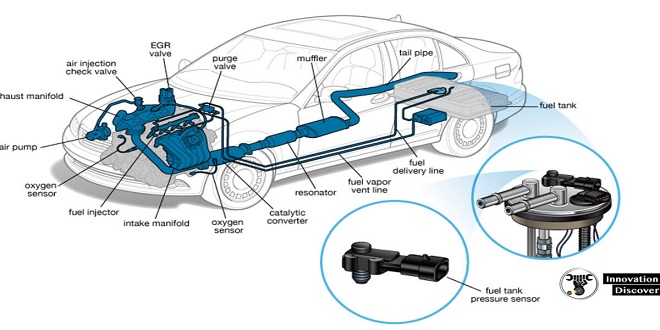If your vehicle is suffering from fuel-system problems, remember that a number of things can be the cause. Most fuel pumps are located inside the fuel tank or so far under the vehicle that you can’t reach them easily without a hoist or crawling under your vehicle, so have a professional check it for you.
If your fuel pump does need replacing, ask your service facility to replace it with a new one, as their charges for rebuilding yours would probably be more expensive than just installing a new one. Be sure that they guarantee the pump for at least a year. Hopefully, it will last much longer than that.
Fuel filters
Fuel filters do exactly what their name implies — they filter impurities out of the fuel. As the fuel passes along the fuel line on its way to the fuel injectors (or carburetor), it passes through the principal fuel filter. A small screen inside this filter traps the dirt and rust that would otherwise foul up your injectors.
If you drive around most of the time with a near-empty fuel tank, the water in the air inside the tank may cause rust to form, contaminate your fuel, and foul up your fuel filter and possibly the fuel injectors.
There’s usually a filter screen inside the fuel tank, and some vehicles have additional fuel filters inside the fuel pump, between the fuel tank and the fuel pump, and at the entrance to the throttle body. 7-3 shows two types of fuel filters.
Cold air collector box and air filter
Because gasoline engines run on a mixture of air and fuel, the air has to be cleaned before it’s mixed with the fuel. The air filter removes dirt and dust particles before they can enter the combustion chamber.
In the “olden days,” most air filters were inside large, round air cleaners that sat on top of the carburetor. Today’s fuel-injected engines have a rectangular air filter inside a cold air collector box located near the front of the engine.
To find the rectangular cold air collector box in your vehicle, pop the hood and follow the large air intake duct away from your engine. If you have an older vehicle with a large round air cleaner, you can’t miss it. If you don’t know how to get the hood of your vehicle open, see 1 or your owner’s manual.
To keep your engine functioning efficiently, be sure to check your air filter regularly as part of the under-the-hood check that I cover in 2, and replace it at least once a year or every 20,000 miles, whichever comes first.
(Replace the air filter more often if you regularly drive in a dusty or sandy area.) Chapter 8 helps you find your air filter, judge whether it needs to be changed, and change it yourself (it’s a surprisingly easy job).
Last word
After being filtered in the cold air collector box, air bound for the engine flows through the air intake manifold. This chamber usually is found near the top of the engine; it holds the air under vacuum and admits it into the combustion chamber with the proper amount of fuel.
After the fuel/air mixture is burned in the engine, another set of manifold pipes, called the exhaust manifold, carries carbon monoxide and other waste gases away from the engine through the exhaust system for disposal. You usually find the exhaust manifold either lower down on the same side of the engine as the intake manifold or on the other side of the cylinder head.
 Jobsearchdone.com Top News Share Website
Jobsearchdone.com Top News Share Website




